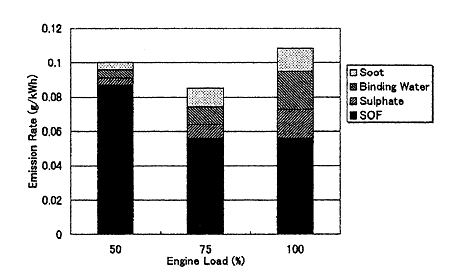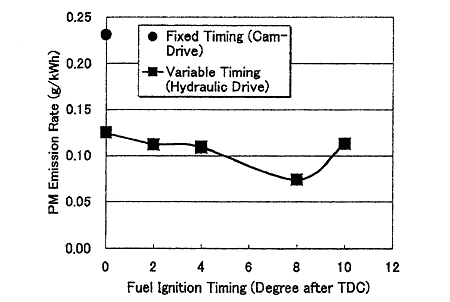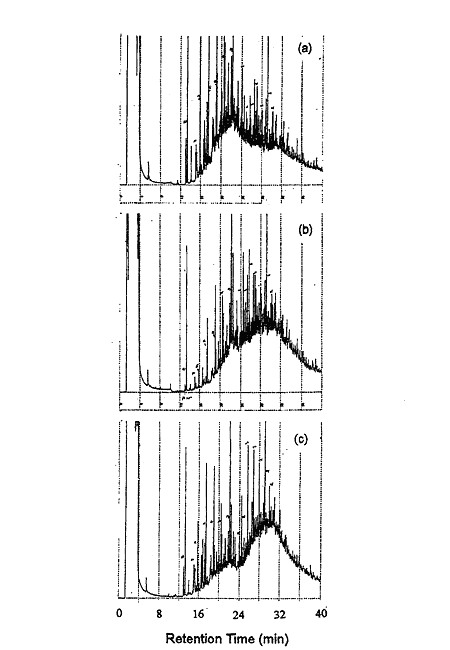Moreover, GC and GC-MS analyses were conducted to study the contents of the above SOF samples. The gas chromatograms are shown in Fig.5. A broad peak looked to shift to long retention time (r.t.) as engine load was raised, and split into two peaks at 100% engine load. Thus, the broad peak would be divided into two fractions of relatively light (peak r.t. = 22 min) and relatively heavy (peak r.t. = 30 min). As engine load was raised, the peak area of the light fraction decreased compared with that of the heavy fraction. Then, the contribution of the light fraction to SOF emission decreased because the peak area of the heavy fraction was almost constant for GC sample concentration. On the other hand, sharp peaks at r.t. = 13.2 rain or longer were assigned to normal paraffins from the retention time. [5] Furthermore, GC-MS analysis showed SOF contained aromatics and heterocyclic compounds as well as paraffins.

Fig.4 Detailed PM Composition

Fig.6 Effect of Fuel Ignition Timing on PM Emission

Fig, 5 Gas Chromatograms of SOF (a) 50%, (b) 75%, (c) 100% Engine Load
3.2 Effect of Fuel Ignition Timing on PM Emission
Secondly, the effect of the fuel ignition timing on PM emission is described. The experiments were mainly conducted at 25% engine load because the effect was expected to have a larger change at lower engine loads than at higher engine loads. The fuel ignition timing was varied from 0 to 10 degrees after top dead center (TDC) with hydraulic drive system while the fuel ignition timing with cam-drive system was at almost TDC. The result was shown in Fig.6. As the fuel ignition timing was delayed, PM emission rate was lowered, minimized at 8 degrees after TDC, and raised again at 10 degrees.
Although it was predicted that PM would be mimmized at TDC, where cylinder temperature would be maximized by pre-combustion compression, PM was minimized at 8 degrees after TDC. The result suggests as follows: when the fuel ignition timing is too early, injected fuel is not mixed with in-take air adequately so that local air/fuel (A/F) ratio is lowered to increase PM compared with the case that fuel is well mixed with in-take air. On the other hand, when the fuel ignition timing is too late, cylinder temperature is lowered so that it also provides uncompleted combustion to increase PM, That is, PM would be minimized at the timing that fuel is well mixed with in-take air while cylinder temperature is adequately high.
BACK CONTENTS NEXT